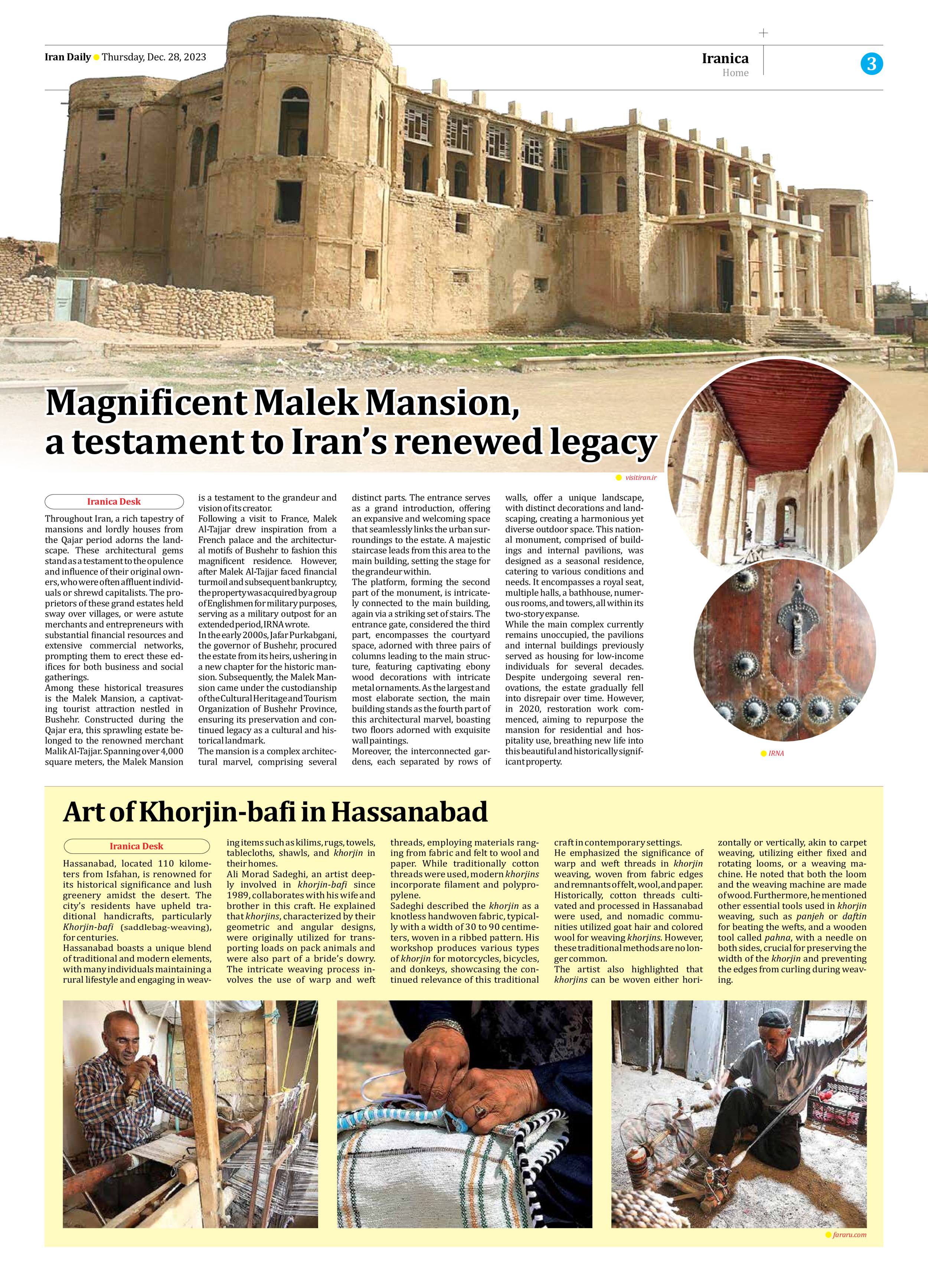
Art of Khorjin-bafi in Hassanabad
Hassanabad, located 110 kilometers from Isfahan, is renowned for its historical significance and lush greenery amidst the desert. The city’s residents have upheld traditional handicrafts, particularly Khorjin-bafi (saddlebag-weaving), for centuries.
Hassanabad boasts a unique blend of traditional and modern elements, with many individuals maintaining a rural lifestyle and engaging in weaving items such as kilims, rugs, towels, tablecloths, shawls, and khorjin in their homes.
Ali Morad Sadeghi, an artist deeply involved in khorjin-bafi since 1989, collaborates with his wife and brother in this craft. He explained that khorjins, characterized by their geometric and angular designs, were originally utilized for transporting loads on pack animals and were also part of a bride’s dowry. The intricate weaving process involves the use of warp and weft threads, employing materials ranging from fabric and felt to wool and paper. While traditionally cotton threads were used, modern khorjins incorporate filament and polypropylene.
Sadeghi described the khorjin as a knotless handwoven fabric, typically with a width of 30 to 90 centimeters, woven in a ribbed pattern. His workshop produces various types of khorjin for motorcycles, bicycles, and donkeys, showcasing the continued relevance of this traditional craft in contemporary settings.
He emphasized the significance of warp and weft threads in khorjin weaving, woven from fabric edges and remnants of felt, wool, and paper. Historically, cotton threads cultivated and processed in Hassanabad were used, and nomadic communities utilized goat hair and colored wool for weaving khorjins. However, these traditional methods are no longer common.
The artist also highlighted that khorjins can be woven either horizontally or vertically, akin to carpet weaving, utilizing either fixed and rotating looms, or a weaving machine. He noted that both the loom and the weaving machine are made of wood. Furthermore, he mentioned other essential tools used in khorjin weaving, such as panjeh or daftin for beating the wefts, and a wooden tool called pahna, with a needle on both sides, crucial for preserving the width of the khorjin and preventing the edges from curling during weaving.







